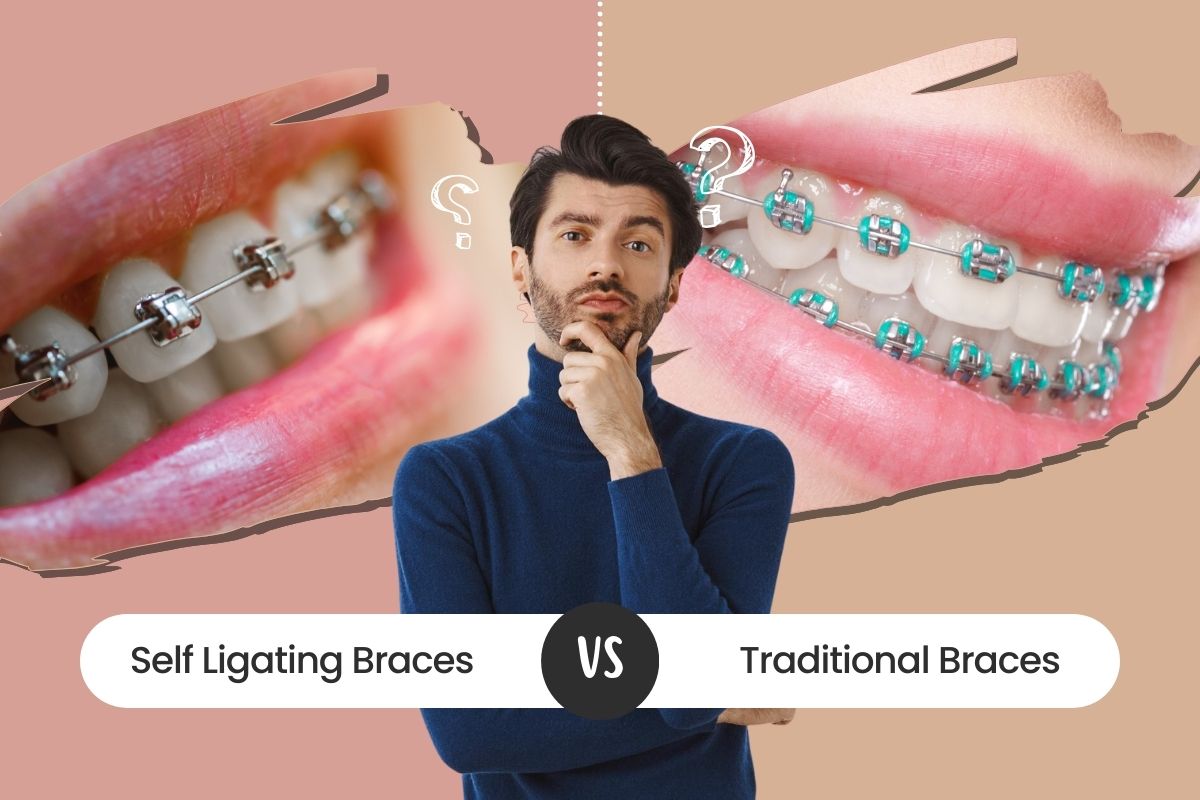Self-Ligating Braces vs. Traditional Braces: Which is Better?

Braces are a time-tested solution for aligning teeth and improving smiles, but with advancements in orthodontics, patients now have multiple options. Two popular choices are traditional braces and self-ligating braces. While both aim to achieve a straighter smile, they differ significantly in their design, functionality, and patient experience. Let’s explore the key differences to help you decide which is better for your needs.
What Are Traditional Braces?
Traditional braces consist of brackets bonded to the teeth and connected by wires. Elastic or metal ties secure the wires, which apply pressure to move teeth into their correct positions.
Pros:
- Effective for a wide range of orthodontic issues.
- Suitable for complex cases like severe misalignment or bite correction.
- Affordable compared to other options.
Cons:
- Requires frequent adjustments by the orthodontist.
- Elastic ties can trap food, making oral hygiene challenging.
- May cause discomfort due to the pressure exerted by the wires and brackets.
What Are Self-Ligating Braces?
Self-ligating braces use a specialized bracket with a built-in clip or sliding mechanism to hold the archwire in place. This eliminates the need for elastic ties.
Pros:
- Faster adjustments due to the absence of elastic ties.
- Easier to clean and maintain oral hygiene.
- Reduced discomfort as they apply less friction to teeth.
Cons:
- May not be suitable for extremely complex orthodontic cases.
- Slightly higher cost compared to traditional braces.
- Limited color options for those who prefer colorful elastics.
Key Differences Between Self-Ligating and Traditional Braces
Understanding the main differences can help you choose the best option for your orthodontic needs:
Comfort: Self-ligating braces are often more comfortable as they apply gentler pressure.
Maintenance: Traditional braces require more frequent orthodontist visits for adjustments.
Hygiene: Self-ligating braces are easier to clean since they don’t use elastic ties that can trap food.
Cost: Traditional braces are usually more budget-friendly.
Which Option Is Right for You?
The choice between self-ligating braces and traditional braces depends on various factors, including your orthodontic needs, lifestyle, and budget. Consulting with an experienced orthodontist will help determine the best treatment plan for you. Both options are effective in delivering beautiful, aligned smiles when used appropriately.
Frequently Asked Questions (FAQs)
Self-ligating braces may reduce treatment time in some cases, but the overall duration depends on the complexity of your orthodontic issues.
Yes, self-ligating braces generally cause less discomfort due to their lower friction design and reduced pressure on teeth.
Self-ligating braces are typically more expensive due to their advanced design and added convenience.

